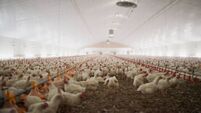Exports key to ensuring high price for milk
Who else will be fighting for their share of the Chinese market? Over the next 10 years, a global increase of milk production of around 2.3% per year is predicted by Torsten Hemme of the International Farm Comparison Network.
But the main growth will be seen only in a limited number of areas — India, Africa, and South America.
By 2023, IFCN expects milk production growth of 50% in Africa, India and South America; 20%-25% in central America, New Zealand, China, and the Middle East; and 11%-14% in the EU, north America, and eastern Europe.
Within the EU figure, Ireland stands out with its target to expand milk production 50% after 2015.
Over the past 13 years, the IFCN global network of dairy researchers, companies and other stakeholders has studied the dairy business worldwide. In their analysis and annual reports, it has become clear that costs are the determining factor for profit (and hence economic sustainability) on dairy farms.
Costs of milk production differ strongly across the world, and are changing rapidly, in China, for example, where there has been a strong increase of costs over the last 10 years.
It is also promising for Ireland that IFCN studies show that family farm types are more resilient than business-type farms.
According to IFCN, in 2011, the dearest areas for milk production included Canada, Scandinavia, Denmark, Belgium, Poland ($40-$45/100kg), Italy, China ($62/100kg), and Iran.
The next dearest included Mexico, Spain, France, The Netherlands, Germany, Austria, Turkey, Israel, Colombia — followed by Brazil, the US ($40-$45/100kg), Ireland, and the UK.
Costs were lower in 2011 in Russia, Australia and New Zealand ($34/100kg), India, and South Africa.
In the next tier for low milk cost were Argentina ($28/100kg), Peru and Chile.









